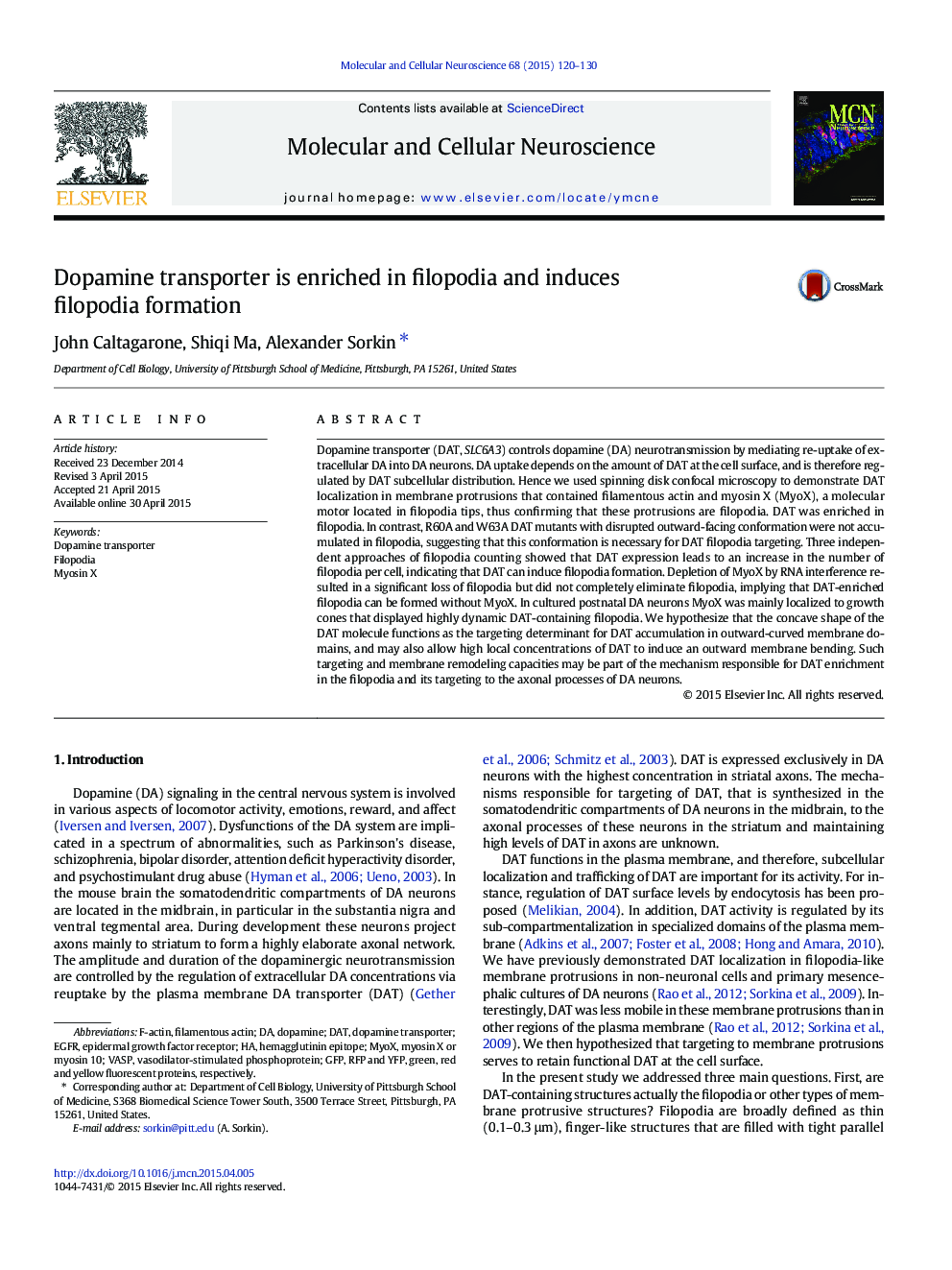| Article ID | Journal | Published Year | Pages | File Type |
|---|---|---|---|---|
| 8478528 | Molecular and Cellular Neuroscience | 2015 | 11 Pages |
Abstract
Dopamine transporter (DAT, SLC6A3) controls dopamine (DA) neurotransmission by mediating re-uptake of extracellular DA into DA neurons. DA uptake depends on the amount of DAT at the cell surface, and is therefore regulated by DAT subcellular distribution. Hence we used spinning disk confocal microscopy to demonstrate DAT localization in membrane protrusions that contained filamentous actin and myosin X (MyoX), a molecular motor located in filopodia tips, thus confirming that these protrusions are filopodia. DAT was enriched in filopodia. In contrast, R60A and W63A DAT mutants with disrupted outward-facing conformation were not accumulated in filopodia, suggesting that this conformation is necessary for DAT filopodia targeting. Three independent approaches of filopodia counting showed that DAT expression leads to an increase in the number of filopodia per cell, indicating that DAT can induce filopodia formation. Depletion of MyoX by RNA interference resulted in a significant loss of filopodia but did not completely eliminate filopodia, implying that DAT-enriched filopodia can be formed without MyoX. In cultured postnatal DA neurons MyoX was mainly localized to growth cones that displayed highly dynamic DAT-containing filopodia. We hypothesize that the concave shape of the DAT molecule functions as the targeting determinant for DAT accumulation in outward-curved membrane domains, and may also allow high local concentrations of DAT to induce an outward membrane bending. Such targeting and membrane remodeling capacities may be part of the mechanism responsible for DAT enrichment in the filopodia and its targeting to the axonal processes of DA neurons.
Keywords
Related Topics
Life Sciences
Biochemistry, Genetics and Molecular Biology
Cell Biology
Authors
John Caltagarone, Shiqi Ma, Alexander Sorkin,
